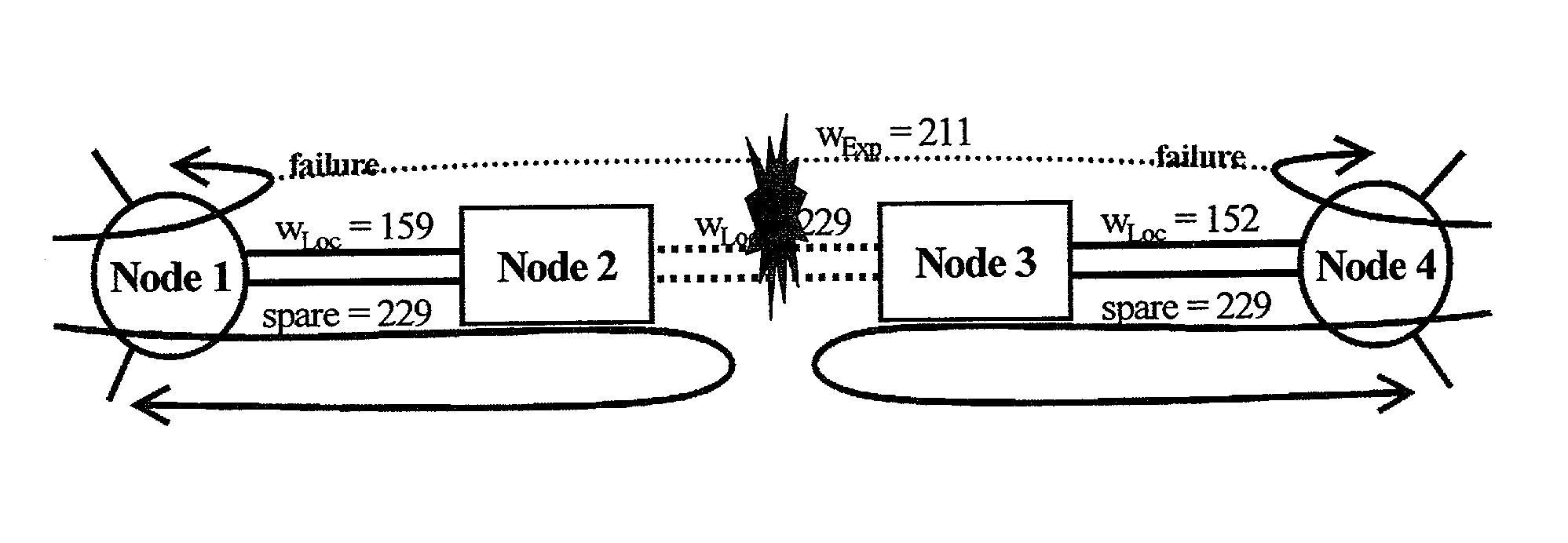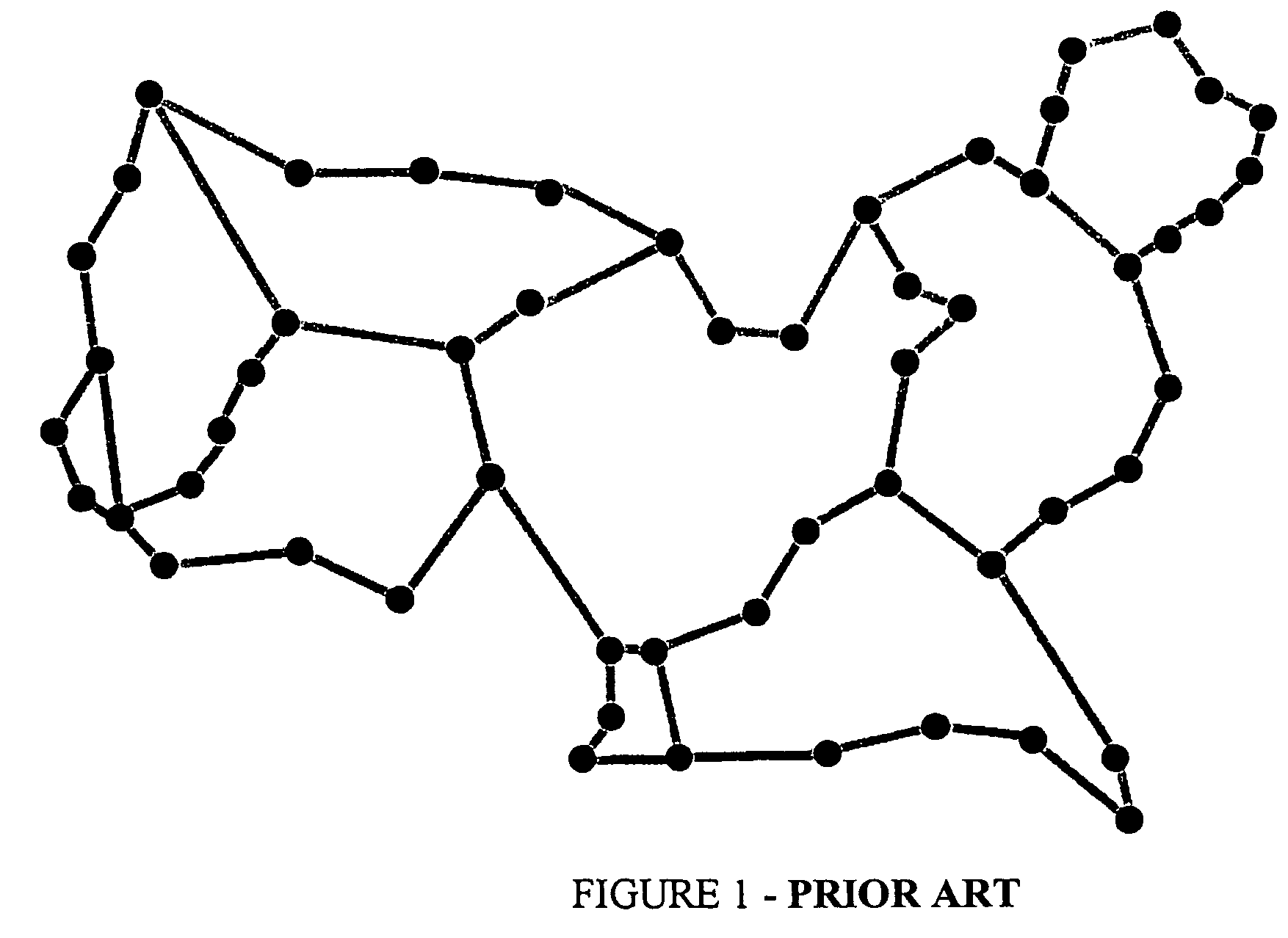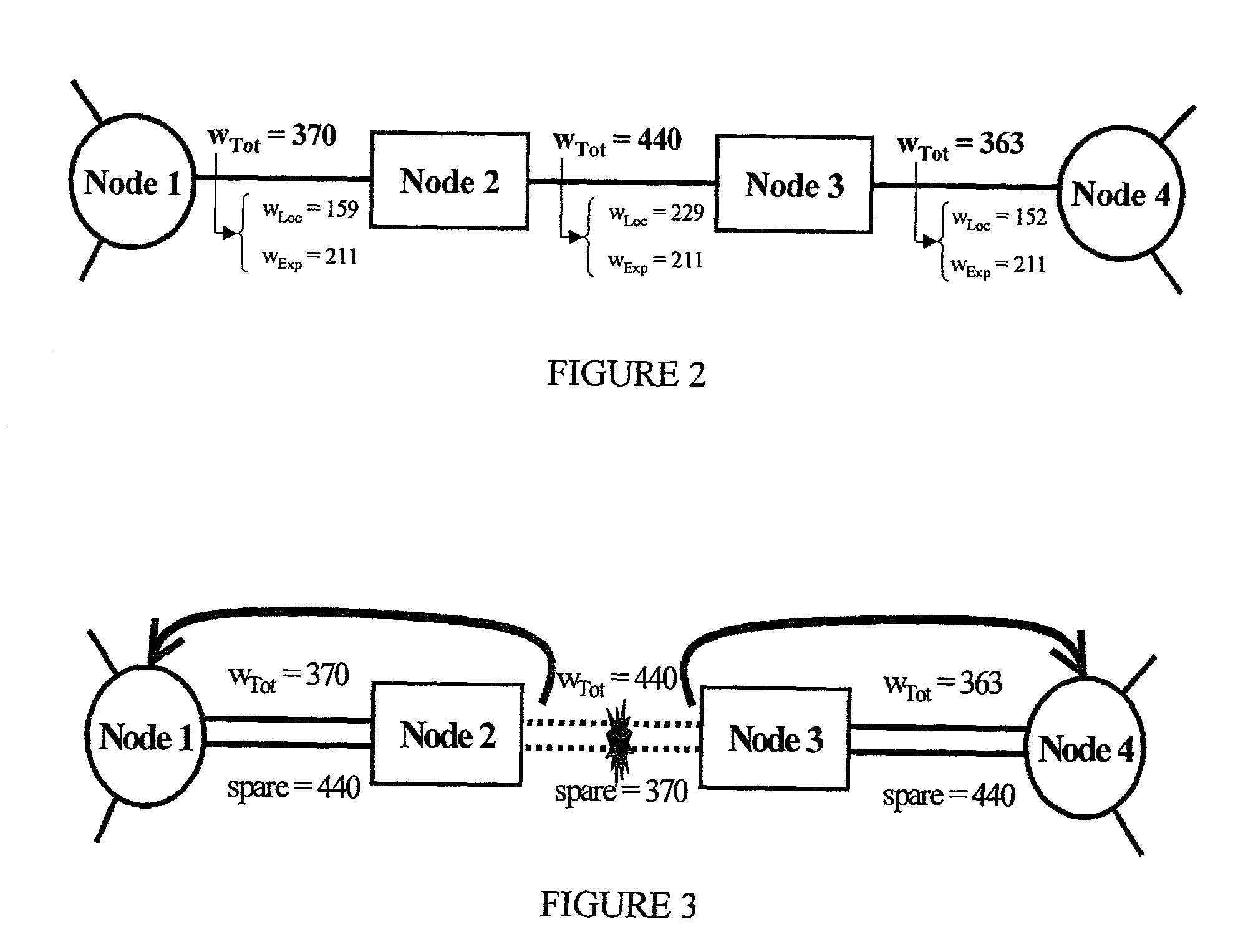Design of a meta-mesh of chain sub-networks
a meta-mesh and network technology, applied in the field of meta-mesh of chain sub-networks, can solve the problems of less capacity efficiency, difficult to prove the economic advantage of mesh-based networking, and still be difficult to prove the economic advantage of mesh-based restoration
- Summary
- Abstract
- Description
- Claims
- Application Information
AI Technical Summary
Benefits of technology
Problems solved by technology
Method used
Image
Examples
Embodiment Construction
[0038]In this patent document, the word “comprising” is used in its non-limiting sense to mean that items following the word in the sentence are included and that items not specifically mentioned are not excluded. The use of the indefinite article “a” in the claims before an element means that one of the elements is specified, but does not specifically exclude others of the elements being present, unless, unless the context clearly requires that there be one and only one of the elements.
[0039]By changing the way capacity allocation and restoration in chains is carried out, a reduction in total capacity may be obtained while providing for full restorability of the network.
How Chains are Capacitated in the Conventional Model
[0040]The sparse network in FIG. 1 has 55 nodes and 62 spans for d=2.25 and contains 14 chain sub-networks and seven direct spans. By definition, chains are bounded on each end by a node with d≧3 which are the anchor nodes of the chain. The conventional mesh design...
PUM
 Login to View More
Login to View More Abstract
Description
Claims
Application Information
 Login to View More
Login to View More - R&D
- Intellectual Property
- Life Sciences
- Materials
- Tech Scout
- Unparalleled Data Quality
- Higher Quality Content
- 60% Fewer Hallucinations
Browse by: Latest US Patents, China's latest patents, Technical Efficacy Thesaurus, Application Domain, Technology Topic, Popular Technical Reports.
© 2025 PatSnap. All rights reserved.Legal|Privacy policy|Modern Slavery Act Transparency Statement|Sitemap|About US| Contact US: help@patsnap.com



